The United States is a sprawling canvas of diverse landscapes, each with its own geological tale to tell. This expansive collection of mountains, deserts, caves, and coasts paints a captivating picture of the incredible forces that have shaped our planet over billions of years.
We’ve written about the States quite a bit (it’s a huge place after all) and now we’re taking you on a coast-to-coast journey to explore the seven most spectacular geological wonders it has to offer.
From fiery volcanoes that bubble with Earth’s fiery spirit, to gaping canyons carved by persistent rivers, these special destinations showcase the best of America’s geological masterpieces. Uncover hidden gems glittering in deep, dark caves or stand in awe before towering cliffs where colorful layers speak volumes about our planet’s past.
Whether you’re a passionate geologist with a thirst for uncovering Earth’s secrets, or an adventurer seeking remarkable vistas that will take your breath away, this article is your treasure map.
Fasten your hiking boots, ready your backpack, and prepare to embark on a thrilling exploration that takes you to the heart of America’s geological grandeur. The extraordinary wonders of Mother Nature await your discovery!
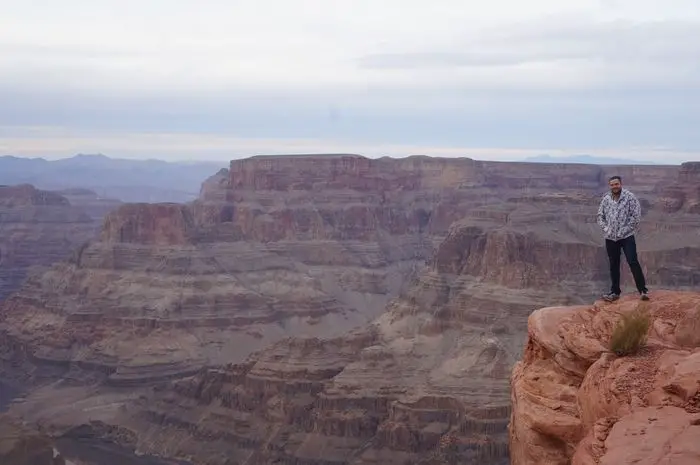
The Best Places In The US To Witness Incredible Geologic Wonders
In no particular order, these are our favorite States when we really want to witness the wonder and beauty of the earth’s geology:
Nevada
Nevada is brimming with geological features that are as beautiful as they are fascinating. While most people think of Vegas when they think of Nevada, it has a lot more to offer for the whole family. Even Las Vegas is becoming more fun with kids!
A trip to Nevada is like stepping into Earth’s personal gallery, showcasing art masterpieces that have been millions of years in the making. Its home to some of the best rockhounding locations in the country and is a favorite of amateur and experienced rock collectors.
One of the highlights in Nevada is the Valley of Fire State Park. Here, fiery red sandstone formations, formed from shifting sand dunes 150 million years ago, blaze under the sun, giving the park its name. These formations create a captivating contrast against the clear blue skies, a sight that will take your breath away.
The Great Basin National Park, another gem in Nevada, offers an entirely different spectacle. The park houses the Lehman Caves, a subterranean wonder adorned with stalactites, stalagmites, and rare shield formations. Above ground, the park’s alpine landscape, shaped by ancient glaciers, contrasts sharply with the arid surroundings.
Nevada is also home to the striking Black Rock Desert. This dry lake bed, or playa, provides a flat, stark landscape that is a stark testament to the power of water and wind erosion over time.
And let’s not forget Red Rock Canyon, where visitors can explore a series of colorful, striated cliffs bearing the vibrant record of past eras.
In Nevada, every rock, every hill, every stretch of desert tells a tale of time, erosion, and the relentless dance of the Earth’s crust. It’s a state that brings the science of geology to life in the most visually striking ways possible.
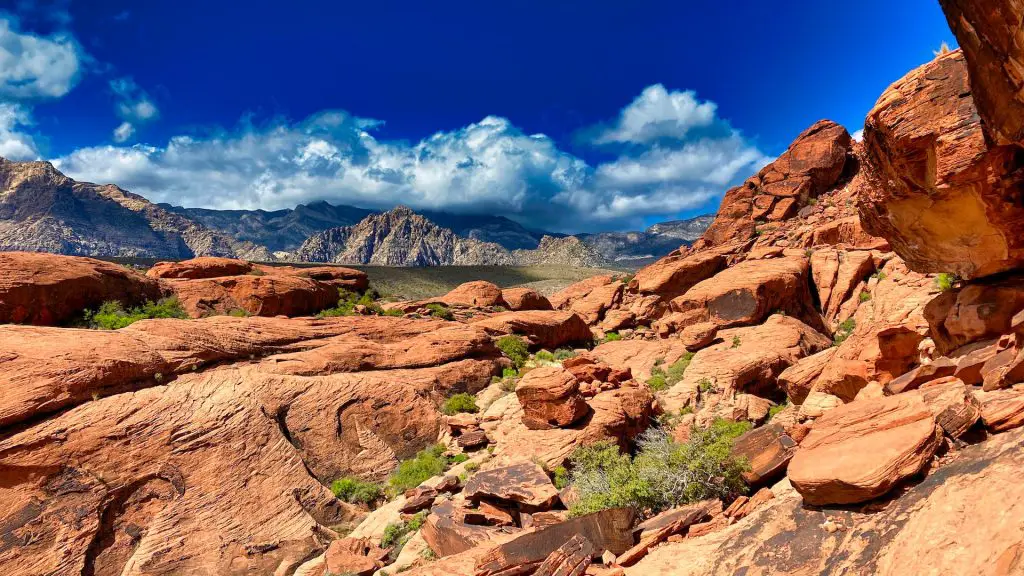
California
While you probably know about its Hollywood glamour, golden beaches, and majestic redwoods, California also boasts a truly diverse and fascinating geological landscape. It’s like an open-air museum, with exhibits spanning millions of years, ready for us to explore!
First up, the striking cliffs of the Pacific Coast Highway. These rugged features, formed from the continuous churning between the Pacific and North American tectonic plates, rise majestically against the backdrop of the expansive Pacific Ocean.
If you’re planning to drive around the state, there are a few things you should know about traveling through California by car. It’s a big state so be prepared!
Next, we head inland to the mesmerizing Death Valley National Park. This location proudly holds the title of the lowest, hottest, and driest place in North America! Its unique geology, ranging from salt flats to colorful rock formations, is a testament to the forces of erosion and weathering over time.
Up north, you’ll encounter the formidable Mount Shasta, part of the Cascade Range. This towering volcano has been shaped by eruptions throughout thousands of years and stands as a majestic reminder of the geothermal activity lurking beneath California’s surface.
Last but not least, we can’t forget the iconic San Andreas Fault, a natural wonder that tells the story of the tectonic forces shaping California. Visible from the ground and stretching over 800 miles, this fault line is a vivid reminder of the ever-changing nature of our planet.
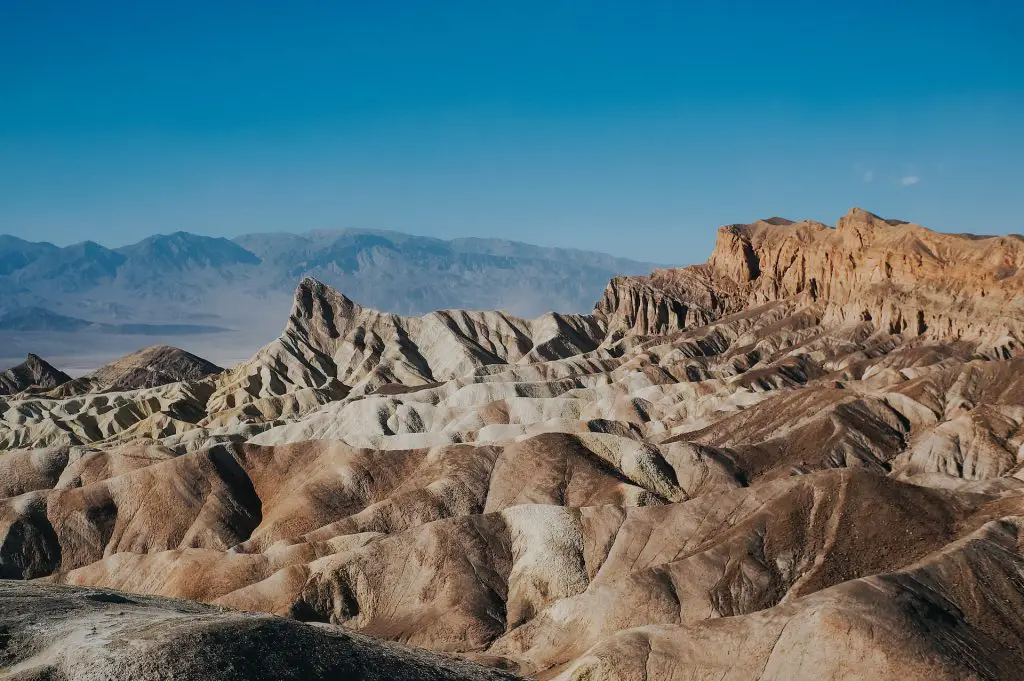
Arkansas
This one probably caught you off guard a bit but hear us out! From the abundant quartz crystals of the Ouachita Mountains to the diamond-rich soils of Crater of Diamonds State Park, the state offers a diverse range of geological wonders that will captivate your curiosity.
One of the most striking features of Arkansas’s geology is its karst landscape. This is characterized by numerous caves, sinkholes, and springs, all sculpted over time by the dissolution of soluble rocks like limestone.
Blanchard Springs Caverns is a perfect place to witness this unique geology. Here, you can explore an enchanting underground world adorned with crystalline formations, stalactites, and stalagmites.
Next, the Ouachita Mountains showcase the power of plate tectonics. Unlike most American mountain ranges that run north to south, these mountains run east to west. This unusual orientation is the result of an ancient collision between what is now South America and North America.
Arkansas is also known for its natural resources. Crater of Diamonds State Park, the only public diamond-bearing site in the world, is a testament to the volcanic activity that once took place here. The park’s diamond-bearing soil is the weathered remains of a volcanic pipe, and visitors are welcome to hunt for their own sparkling treasures.
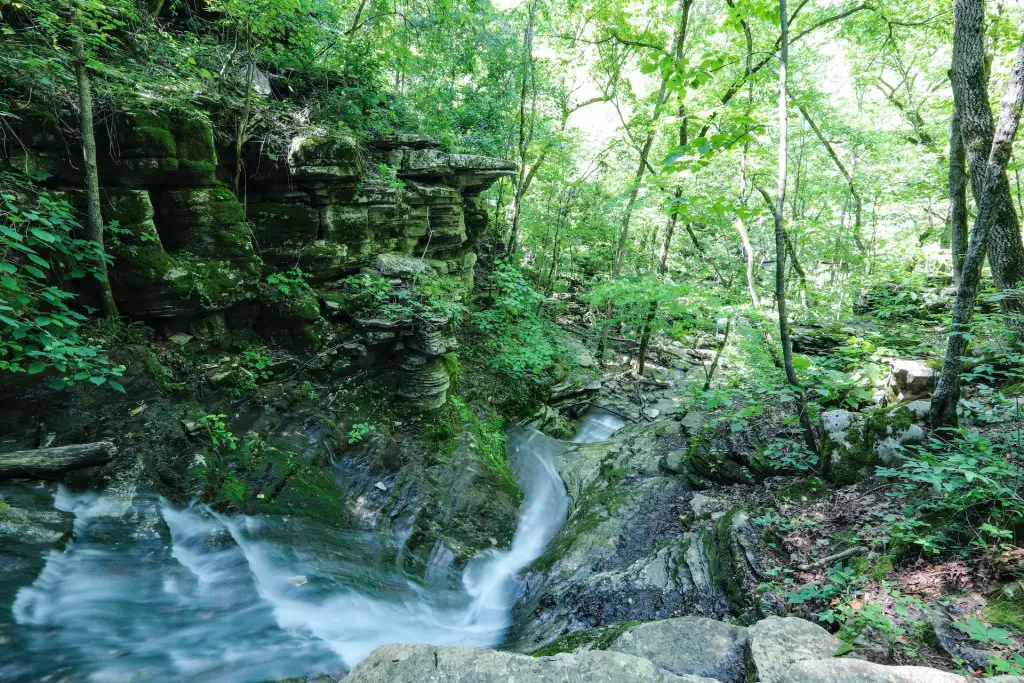
Washington
Nestled in the Pacific Northwest, Washington’s vibrant landscapes, carved by powerful natural forces over millions of years, invite explorers to journey into the heart of Earth’s dynamic story. There is also a ton to do!
An iconic symbol of Washington, Mount Rainier, is a captivating testament to the state’s volcanic history. This active stratovolcano, encased in over 35 square miles of snow and ice, towers over the landscape, offering an unforgettable view of the powerful geothermal forces at play beneath the Earth’s surface.
In Eastern Washington, you’ll encounter the Channeled Scablands. These unique landscapes, with their maze of deep gullies and rock basins, were sculpted by catastrophic floods during the last Ice Age. The Drumheller Channels National Natural Landmark is a fantastic spot to observe these dramatic features.
Also, don’t forget to visit the San Juan Islands, an archipelago boasting an intriguing geological history. Here, you can find unique rock formations, including pillow lava and fossils, revealing a complex past of volcanic activity and ancient sea life.
The Olympic Peninsula, home to the Olympic Mountains and Olympica National Park and temperate rainforests, displays the power of erosion and glaciation, with deep valleys and jagged peaks shaped by glacial ice. Check out our favorite spots in Olympic National Park to get some more ideas!
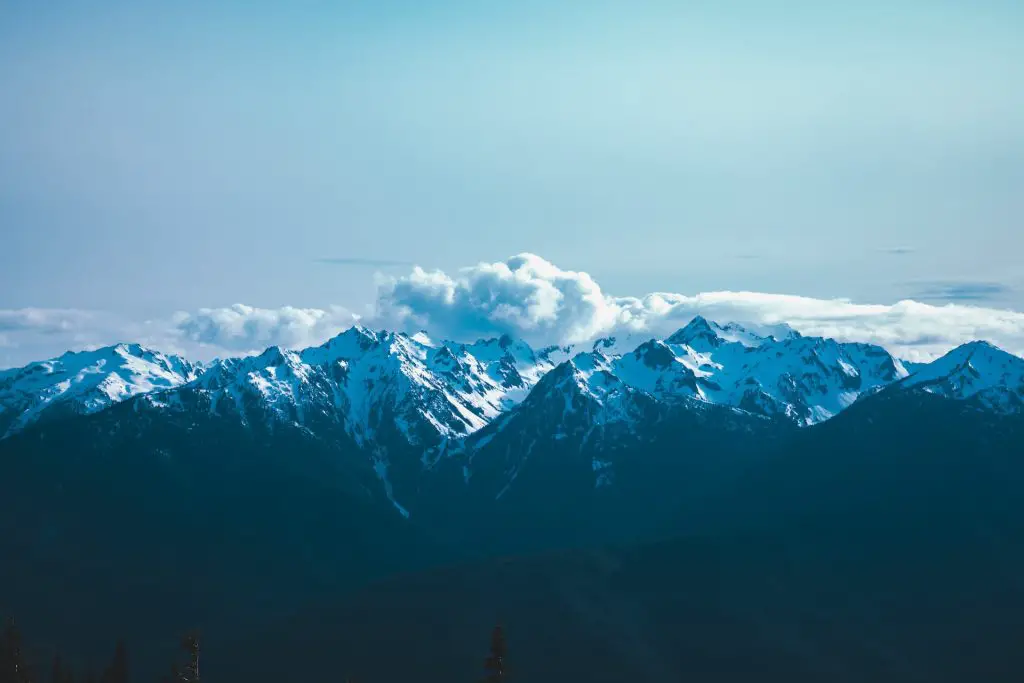
Maine
When most people think of Maine it’s lobsters and lighthouses that come to mind but it also offers a rich geological tapestry that is as captivating as it is diverse. With its rolling mountains, craggy coastlines, and expansive forests, Maine is a dream come true for anyone with an interest in Earth’s natural history.
Did we mention that it’s also one of the most picturesque places in the US that we’ve found?
Acadia National Park is one of Maine’s geological highlights. This coastal park boasts a diverse landscape formed by glaciation, featuring everything from towering granite cliffs to rocky shorelines, and even a freshwater lake carved out by ancient glaciers.
Another iconic geological feature in Maine is Mount Katahdin, the highest peak in the state. This impressive mountain exposes the roots of an ancient mountain range, allowing visitors to observe various rock types, including igneous and metamorphic rocks.
Maine’s coastline also offers opportunities for fossil hunting. At sites like Pemaquid Point, visitors can discover fossils of ancient sea creatures etched into the rocks, remnants of a time when Maine lay beneath a warm, tropical sea.
Further inland, the Maine Mineral and Gem Museum is a must-see. It showcases a stunning variety of gems and minerals found in the state, including the famous Maine tourmaline.

Utah
There are few States that have the sheer diversity that you find in Utah. It offers an array of dramatic landscapes that range from snow-capped mountains and verdant forests to arid deserts dotted with spectacular rock formations.
This diverse range of features makes Utah a real-life classroom for exploring Earth’s dynamic history. It’s also a big reason why Utah has some space on our list of 50 US destiantaions you just have to visit.
Perhaps the most renowned of Utah’s geological wonders are the Mighty 5 National Parks: Arches, Bryce Canyon, Canyonlands, Capitol Reef, and Zion. Each park is a testament to the relentless forces of erosion, featuring unique structures like natural arches, deep canyons, and towering cliffs.
Arches National Park, with over 2,000 natural sandstone arches, is a stunning example of the power of wind and water erosion. Bryce Canyon, on the other hand, is famous for its “hoodoos,” tall, skinny spires of rock that create a vibrant, almost alien landscape.
Meanwhile, the Bonneville Salt Flats offer a different perspective of Utah’s geology. This vast, flat expanse, all that remains of the ancient Lake Bonneville, is primarily composed of common table salt, creating a shimmering, otherworldly sight.
Then there’s the Grand Staircase-Escalante National Monument, where layers upon layers of sedimentary rock create a cascading visual history of Earth’s geological past.
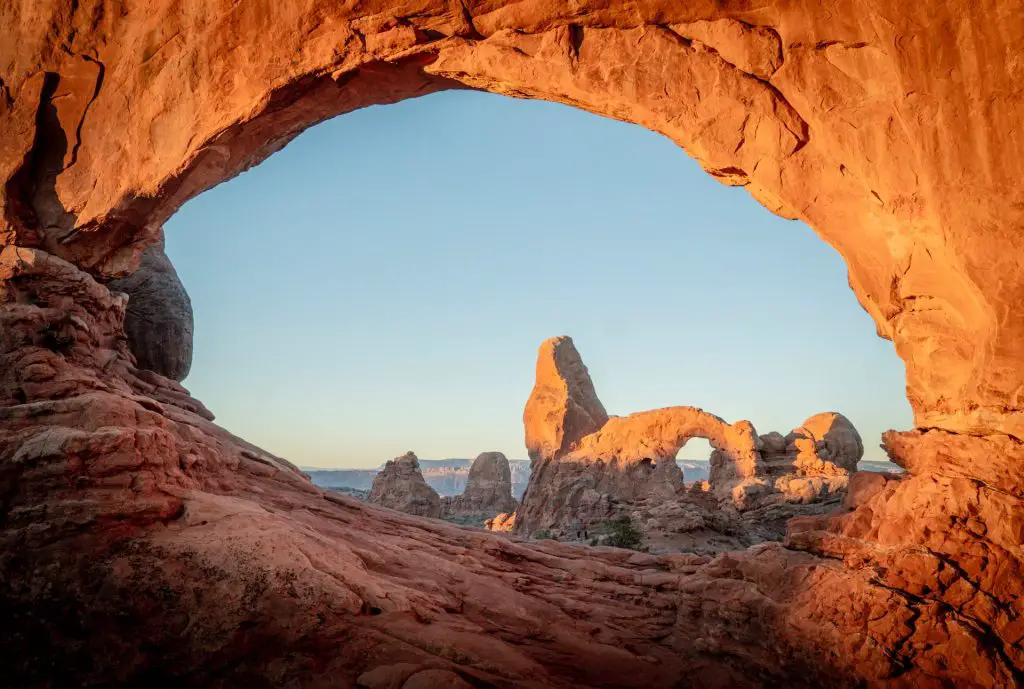
Arizona
Let’s start with the obvious here, the most iconic of Arizona’s geological features is the Grand Canyon. This massive gorge, carved by the Colorado River, reveals nearly two billion years of Earth’s history in its colorful, stratified layers. It’s also an easy day trip from Las Vegas!
The sight of the canyon’s sheer depth and vastness, combined with its rich palette of reds, oranges, and browns, is truly a sight to behold.
But the Grand Canyon is only the beginning. Petrified Forest National Park offers a unique journey into Arizona’s ancient past, featuring fossilized trees from a time when this arid landscape was a lush, tropical region.
The Monument Valley Navajo Tribal Park, famous for its towering sandstone buttes, is a testament to the power of erosion. The buttes, reaching heights of up to 1,000 feet, are all that remain of the sandstone layers that once covered this entire region.
The Red Rock State Park in Sedona presents another stunning view of Arizona’s geology, with its vibrant, red-hued sandstone formations set against clear, blue skies.
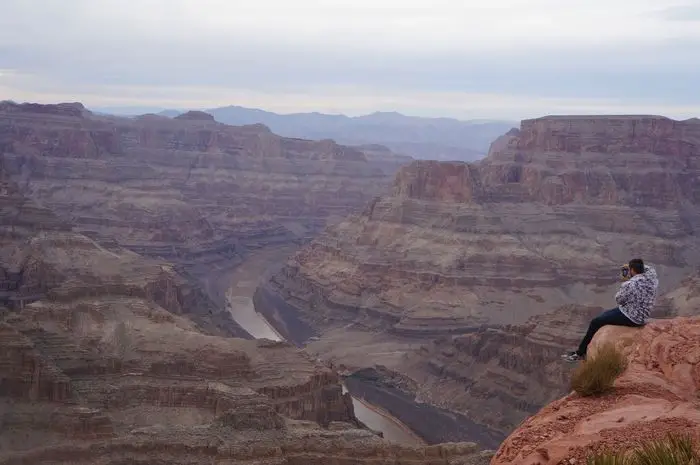
DON'T MISS ANYTHING!
FOMO - do you have it? Well there is no need to Fear On Missing Out here at Explore With Erin. Sign up to receive updates directly to your in box. I won’t spam you, but I do promise a whole lot of awesomeness. What are you waiting for? Join Me!
PS: We hate spam too, read our Privacy Policy here.


